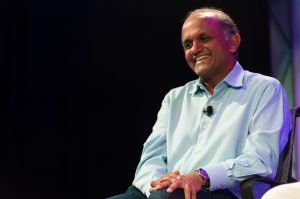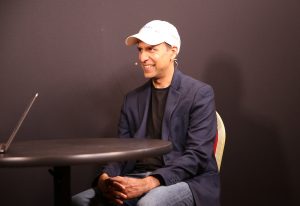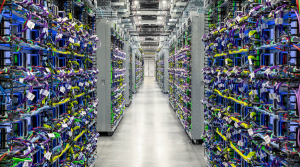Personalized Learning Systems: How Close is Our Tech?
![]() Imagine, a child in a large classroom engaged in a learning experience that is targeted precisely at the skills he or she needs at that moment in time. Or a high school student interested in finance taking advanced coursework in that area, while sitting next to another student focusing on dosages and measurement conversions for a career in veterinary sciences — in the same math class.
Imagine, a child in a large classroom engaged in a learning experience that is targeted precisely at the skills he or she needs at that moment in time. Or a high school student interested in finance taking advanced coursework in that area, while sitting next to another student focusing on dosages and measurement conversions for a career in veterinary sciences — in the same math class.
Though both scenarios are possible today, they aren’t common. Why not?
The opportunity in personalized learning
Personal Learning Systems (PLS) is applied technology that: enables customized learning experiences; provides tools that allow teachers to get instant feedback on students’ performance and understanding; and creates individualized coursework for students based on learning style and ability, to enhance the social aspect of learning. This “smart” learning technology is enabled by big data analytics and cognitive learning science, allowing the system to adapt to each student and quickly and efficiently measure results.
Technology entrepreneurs are realizing that the opportunity for improvement in the education market is huge and one that’s ripe for change. Not only is there a curiosity and a demand for data driven customized learning, but students and teachers are craving more technology in their classrooms as laptops, smart phones and tablets replace paper and pencils as part of the basic “back to school” toolkit.
The PLS marketplace is seeing new solutions from established companies like Knewton, and from up-and-comers such as Always Prepped and Cerego. But despite this energy and activity, we have a long way to go until large-scale adoption of personalized learning systems takes place. The barriers to entry such as cost and the necessity of further research will take time. But the fundamental issue continues to be a cultural one, not a technological one.
What happens to the teachers?
![]() The question then becomes: are teachers at risk as personalized learning grows? Sarah Brown Wessling, the 2010 National Teacher of the Year, said that teachers model learning and they should be the “lead learners.” PLS systems are designed to enhance the teacher’s role as the “lead learner.”
The question then becomes: are teachers at risk as personalized learning grows? Sarah Brown Wessling, the 2010 National Teacher of the Year, said that teachers model learning and they should be the “lead learners.” PLS systems are designed to enhance the teacher’s role as the “lead learner.”
Teachers ensure that students set realizable personal goals, meet benchmarks and work with content that’s both challenging and engaging. They make massive amounts of information personal and relatable. They guide team projects and peer-to-peer learning that teaches students to interact with others in a constructive way. They provide the emotional support and encouragement that young minds require to mature, grow and be inspired.
PLS systems enable teachers to be more personal and effective by quickly and accurately assessing a student’s skill level. Teachers will be able to get real-time feedback and data on each student and the classroom as a whole that will allow them to quickly change or modify their approach. Armed with this data, teachers can structure learning exercises around the students’ individual needs, as opposed to lecturing to a large class and hoping their approach works for the majority.
If we implement personalized learning systems in a careful, results-oriented way, we actually serve to increase the value of the amount of time spent on the human-to-human interaction during learning.
A long road to personalized learning
However, the road to personalized learning is a long one. We have a long way to go before this kind of classroom can be realized.
First, we need more research and case studies to prove that PLS are delivering the transformative results that edtech startups pushing this technology say they are. This research will answer tough questions such as, what are the student and teacher support tools needed to deliver personalized learning in a redesigned, student-centered system? What are the key functions and design elements for assessment, data, curriculum, learning platforms, and teacher professional development and support? What are the new types of student data, technical standards, content delivery models, and integrated learning technologies needed as a platform for personalized learning?
We need teacher education programs that integrate core pedagogical practices with results-based PLS systems and adopt new standards of teacher certification and training.
In addition, we’ll need to wait at least five to ten years before we can expect these systems to be affordable for everyone. The cost of technology needs to reach a level where schools and districts with even the smallest technology budgets can afford a PLS system.
Once this is all in place, how long will it take for teachers to adjust to the new technology? Just like any social change, the process of adopting Personalized Learning Systems, will be a slow one. We need to invest in long term solutions, not quick wins.
A message from John Furrier, co-founder of SiliconANGLE:
Your vote of support is important to us and it helps us keep the content FREE.
One click below supports our mission to provide free, deep, and relevant content.
Join our community on YouTube
Join the community that includes more than 15,000 #CubeAlumni experts, including Amazon.com CEO Andy Jassy, Dell Technologies founder and CEO Michael Dell, Intel CEO Pat Gelsinger, and many more luminaries and experts.
THANK YOU









